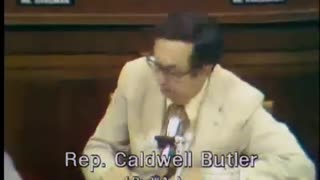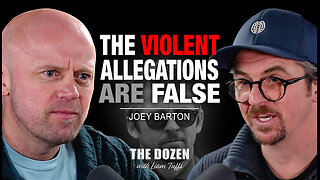Premium Only Content

Controversies and Scandals: Embezzlements, Government Waste, Cost Overrun Controversy
The Maverick Missile cost overrun controversy refers to a scandal that arose in the United States during the 1980s, involving the development and procurement of the AGM-65 Maverick air-to-ground missile.
The Maverick missile was developed by the defense contractor Hughes Aircraft Company (now part of Raytheon Technologies) for the U.S. Air Force and Navy. The missile was designed to be a low-cost, highly effective weapon that could be used against a variety of ground targets, such as tanks and other armored vehicles.
However, during the course of its development and production, the cost of the Maverick missile program skyrocketed, far exceeding the original estimates. The missile's cost overrun was caused by a number of factors, including technical problems, design changes, and production delays.
The cost overrun controversy came to light in the mid-1980s, when the U.S. Congress began investigating the management of the Maverick missile program. The investigation revealed that the program had experienced significant cost overruns, and that Hughes Aircraft had been less than forthcoming about the problems it was facing.
The controversy led to a major overhaul of the U.S. defense procurement system, as well as increased scrutiny of defense contractors and their practices. It also highlighted the need for greater transparency and accountability in the development and procurement of military weapons and equipment.
Despite the controversy surrounding the Maverick missile program, the missile itself has remained in service with the U.S. military and has been widely exported to other countries around the world.
The Palestinian refugee massacre of 1982 refers to the horrific killing of Palestinian refugees in Beirut, Lebanon, during the Israeli invasion of Lebanon in 1982. The massacre took place in the Sabra and Shatila refugee camps, which were under the control of Lebanese Christian militias allied with Israel.
Over a period of three days, between September 16 and 18, the Christian militias systematically killed an estimated 800 to 3,500 Palestinian refugees, including women, children, and elderly people. The exact number of victims is disputed, but it is widely regarded as one of the worst atrocities committed against Palestinians in modern history.
The massacre was widely condemned by the international community and led to widespread outrage and protests in the Arab world. It also resulted in the establishment of an international commission of inquiry to investigate the events that took place.
The Israeli government, under the leadership of Prime Minister Menachem Begin, was heavily criticized for its role in the massacre. While Israel did not directly participate in the killings, it was accused of failing to prevent the massacre and allowing the Christian militias to enter the refugee camps.
The Palestinian refugee massacre of 1982 remains a deeply divisive and traumatic event in the history of the Palestinian-Israeli conflict and the wider Middle East region.
The Egyptian EATSCO embezzlement scandal of the 1990s involved the same state-owned company, EATSCO, which was responsible for importing and distributing basic commodities such as wheat and sugar to the Egyptian people. It was discovered that EATSCO officials, including its managing director and other high-ranking government officials, had embezzled millions of dollars from the company.
The embezzlement scheme involved inflating the prices of imported goods and siphoning off the excess funds into offshore bank accounts. The scheme was discovered in 1995, and it was estimated that over $1 billion had been embezzled over a period of several years.
The scandal caused widespread outrage in Egypt and led to the arrest and conviction of several high-ranking officials, including the managing director of EATSCO and the Minister of Supply and Internal Trade. The scandal also highlighted the pervasive corruption in the Egyptian government and led to calls for greater transparency and accountability in government institutions.
-
 8:57:26
8:57:26
The Memory Hole
17 days agoNixon Impeachment Hearings Day 7 (1974-07-30)
457 -
 48:02
48:02
Survive History
12 hours ago $3.43 earnedCould You Survive as a Sharpshooter in the Napoleonic Wars?
43.7K3 -
 12:03
12:03
Space Ice
13 hours agoSteven Seagal's China Salesman - Mike Tyson Knocks Him Out - Worst Movie Ever
31.4K15 -
 11:37
11:37
Degenerate Jay
12 hours ago $4.91 earnedJames Bond Needs Quality Over Quantity From Amazon
51.4K3 -
 15:23
15:23
Misha Petrov
13 hours agoTrad Wives & Girl Bosses Go to WAR!
46.1K42 -
 2:03:11
2:03:11
TheDozenPodcast
11 hours agoFootball villain fighting the state: Joey Barton
39K1 -

Scottish Viking Gaming
14 hours ago💚Rumble :|: Sunday Funday :|: Smash the Blerps and Vape the Terpes
81.1K8 -
 1:45:00
1:45:00
RG_GerkClan
15 hours ago🔴LIVE Sunday Special - It's Time for World Domination - Civilization VII - Gerk Clan
78.9K27 -
 LIVE
LIVE
Major League Fishing
4 days agoLIVE Tackle Warehouse Invitationals, Stop 1, Day 3
135 watching -
 23:34
23:34
marcushouse
16 hours ago $15.83 earnedBREAKING: Starship Launch IMMINENT – But What’s This SURPRISE Flight 9 Plan?! 🚀🔥
118K16